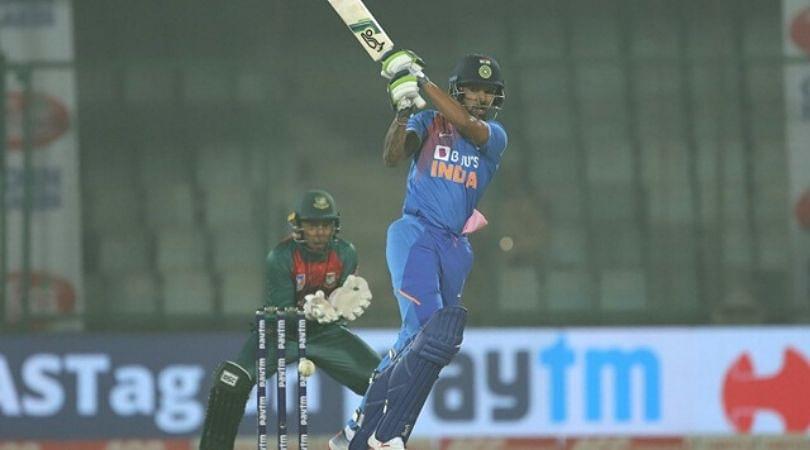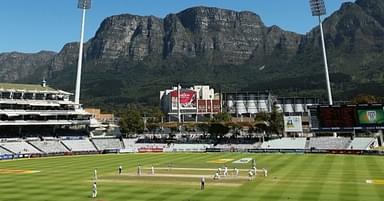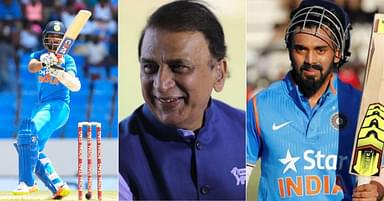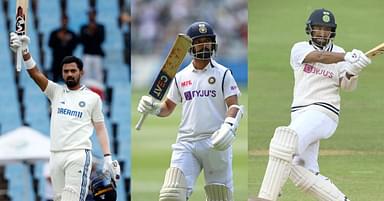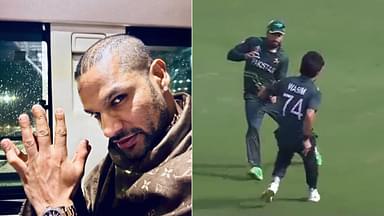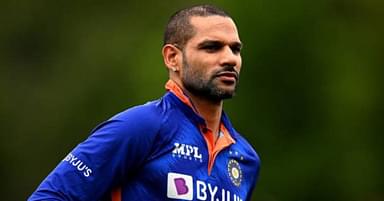Should Shikhar Dhawan’s T20I strike rate bother India: The opening batsman’s pace of scoring runs has come under the scanner this year.
Advertisement
“That is a ridiculous call. That’s absolutely ridiculous call. That has got the well-set batsman out. There was never, never, a second run in it,” legendary Indian cricketer and commentator Sunil Gavaskar said on air after India opening batsman Shikhar Dhawan was run-out in the first T20I of the ongoing Bangladesh’s tour of India in Delhi last night.
Opening the batting with captain Rohit Sharma (9), Dhawan had scored 41 (42) at a strike rate of 97.61 against a Bangladeshi attack missing at least a couple of their regular bowlers.
While many criticized Dhawan’s partner in wicket-keeper batsman Rishabh Pant for calling wrongly, one can’t deny that the calling was an aftermath of the Indian batsmen not finding enough boundaries. Batting at 6* (11) before the delivery on which Dhawan got out, Pant was slow but fairly new to the crease.
As far as Dhawan is concerned, when an opening batsman plays till the 15th over of a T20I innings and still scores at a strike rate at which Dhawan did, things need to be assessed. When the next ICC T20 World Cup is less than a year away, this assessment becomes all the more important.
Other than Dhawan’s slow start putting pressure on him in the middle-overs, it also means that the other batsmen have to make that extra effort to play the rescue act. Shreyas Iyer’s innings seemed to a classic example of the same yesterday.
Should Shikhar Dhawan’s T20I strike rate bother India?
With T20 batsmen going against the bowlers from the word go these days, Indian openers are still seen laying emphasis on “getting their eye in”. In what isn’t a bad practice, them not pressing the accelerator at all sometimes sucks momentum out of the whole innings.
In the 10 T20Is that Dhawan has played this year, he has scored 222 runs at an average of 22.20 and a strike rate of 109.35. Among the Top 10 T20I teams, Dhawan’s strike rate puts him at No. 27 among opening batsmen. Dhawan, who has a career strike rate of 128.67, has received a significant dip by his own standard.
Among the Top 10 teams, 44 batsmen have opened the innings this year. Dhawan playing 10 matches is the maximum number of matches played by an opener in 2019. Despite getting so many opportunities, the senior batsman not delivering is surely a concern for the Indian team.
And 22 from 13 is still far more impactful an innings than Dhawan’s 24 from 27 at the moment. Which is perhaps also the reason why Shreyas feels like he has to go every ball. India need to rethink this, regardless of the result today. https://t.co/3qHw0JzZWK
— Raunak Kapoor (@RaunakRK) November 3, 2019
With the Top 10 batsmen in this list playing at a strike rate of above 145, it throws light on where the Indian team is lacking. Dhawan is not to be blamed alone. With Sharma scoring 215 runs in nine T20Is at a strike rate of 122.85, even Dhawan’s partner hasn’t had the best of years in this format.
Shikhar Dhawan’s T20I strike rate over the years
Having made his T20I debut in 2011, it was only in 2016 that Dhawan started to open for India in its “real sense”. Much of that was also because of India playing a limited number of T20Is in 2013-2015.
In 2016, Dhawan had scored 301 runs in 14 T20Is at an average of 25.08 and a strike rate of 117.57. The numbers went on to improve in 2017 and 2018 before going down this year.
In six T20Is in 2017, Dhawan’s 127 runs had come at an average of 25.40 and a strike rate of 138.04. Having played a joint-maximum of 18 T20Is (along with Sharma) in 2018, Dhawan had scored 689 runs at an average of 40.52 and a strike rate of 147.22 including six half-centuries.
Dhawan coming down from an all-time personal high to his strike rate this year in T20Is has further started to worry the Indian fans.
Lokesh Rahul as Dhawan’s replacement?
It is worth mentioning that Lokesh Rahul (146.25) is among the Top 10 batsmen in the list for 2019. In 14 T20Is as an opener, Rahul has scored 535 runs at an average of 41.14 and a strike rate of 142.66 including five half-centuries.
Not saying that Rahul should immediately replace Dhawan as Sharma’s opening partner but it is a call the selectors and team management will have to take if the 33-year old southpaw’s strike rate doesn’t improve in the forthcoming matches.

